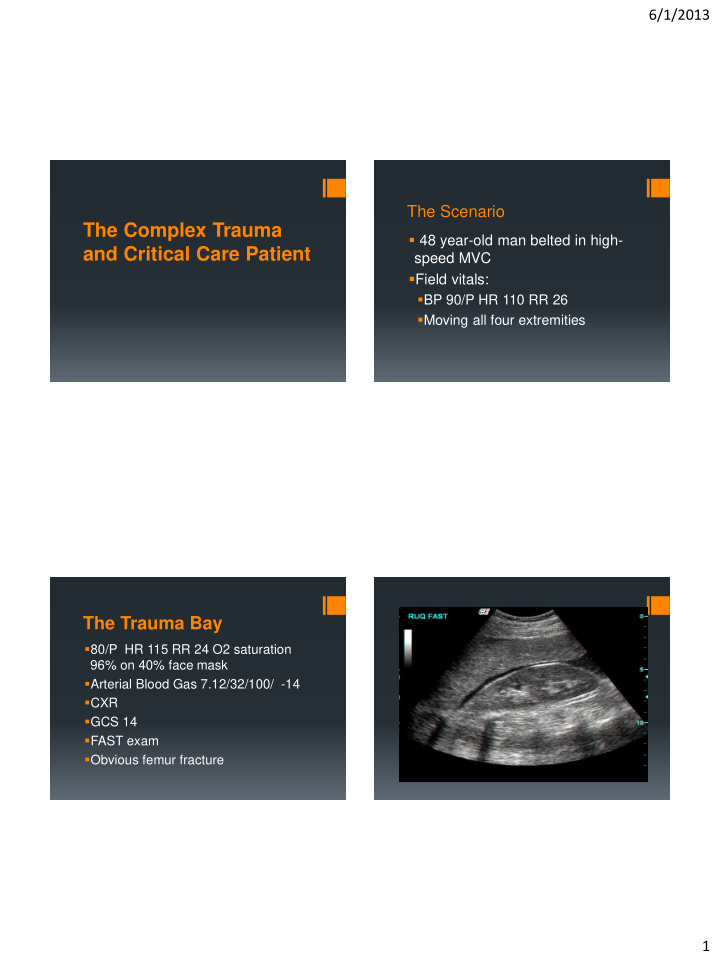



6/1/2013 The Scenario The Complex Trauma 48 year-old man belted in high- and Critical Care Patient speed MVC Field vitals: BP 90/P HR 110 RR 26 Moving all four extremities The Trauma Bay 80/P HR 115 RR 24 O2 saturation 96% on 40% face mask Arterial Blood Gas 7.12/32/100/ -14 CXR GCS 14 FAST exam Obvious femur fracture 1
6/1/2013 The Trauma Bay What is your choice for initial resuscitation? Any other diagnostic modalities you need right now? 2 units PRBS given BP 110/p HR 90 for 6 minutes Do you want to intubate? Transient Responder Disposition Choices CT scan Operating room Interventional radiology Intensive Care Unit WHERE DO WE GO FROM HERE? 2
6/1/2013 CT Scan results IR Embolization Anything you would tell the Interventionalist? How would you manage the resuscitation in this setting? To coil or to gel foam? 3
6/1/2013 Hospital Day 4 Low tidal volume ventilation Transfer to the ICU Started with a PIP of 30 Plt 18 First 24 hours: Now with PIP 52 and Plt 34 Desaturations when turning Exam-Abdomen is more distended What are the next steps in diagnosis CXR shows ARDS and management? The anticoagulation question When will you fix the bone? Day 7 Bladder Pressure is 52 Creatinine 1.9 Options for Intra-abdominal compartment syndrome Tea colored urine CK 40,000 K 5.6 with peaked T waves 4
6/1/2013 Case #2 18 year old GSW to the epigastrium Follow Up Studies Vitals: 70/P, 130 HR, RR 30 ABG: 6.9/38/90 -18 Long term care Functional recovery Initial Trauma Evaluation and Management Initial Management Initial CXR What size chest tube? Chest tube output=400cc in 15 minutes then slows down Abdomen tender and distended 5
6/1/2013 OR Management Goals of ICU Care Resuscitation plan AVOID hypothermia, coagulopathy Use of TEG and acidosis Surgical plan Open Abdomen Findings: renal injury at hilum, small Sedation meds/prevention of delirium spleen injury, stomach injury, pancreatic injury, small bowel injury Anticoagulation 14 units PRBS, 10 units FFP, plts Nutrition strategy Goals for glycemic control Strategy of Abdominal Wound POD 7 Closure Tmax 39.0 WBC 18, hypotensive, tachycardic UA +WBCS, gram negative rods New infiltrate and moderate PMNs, gram negative rods, mod secretions, NO vent setting changes 6
Recommend
More recommend